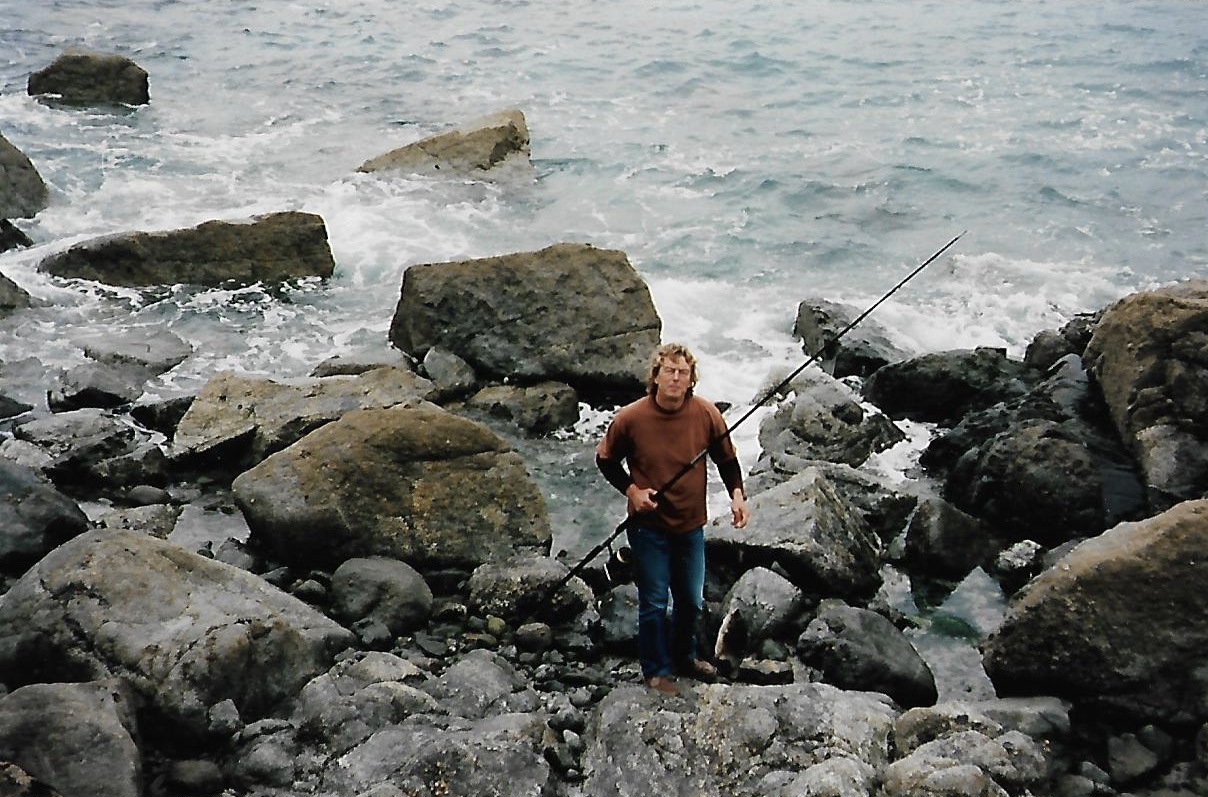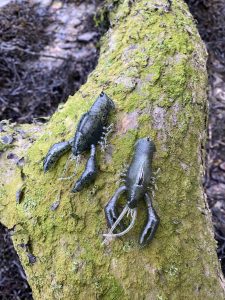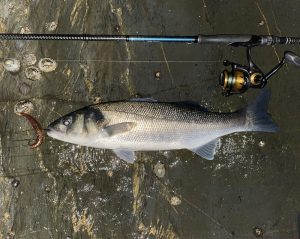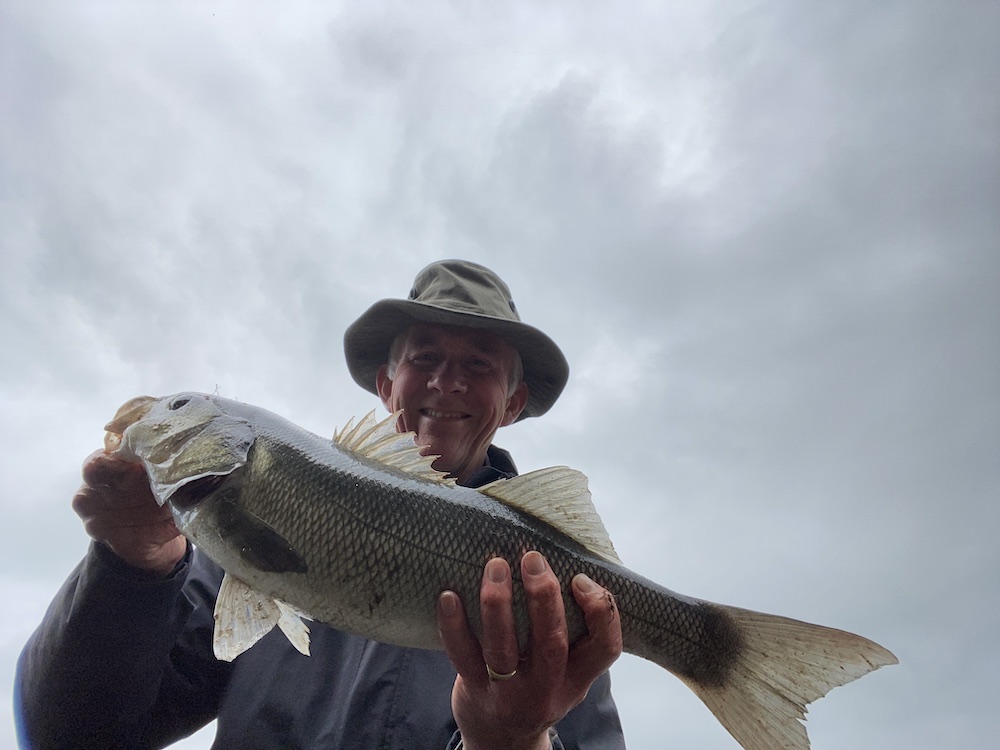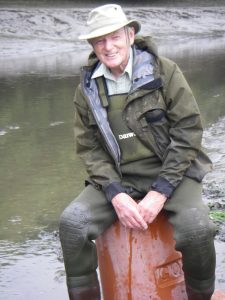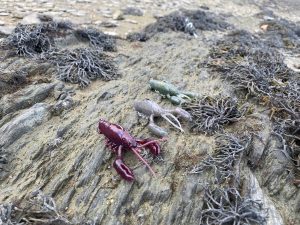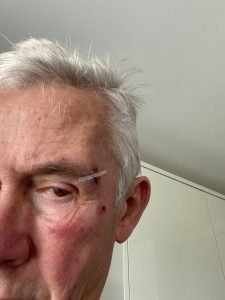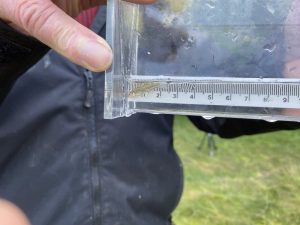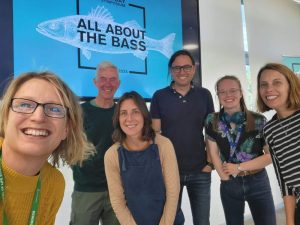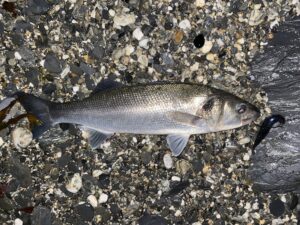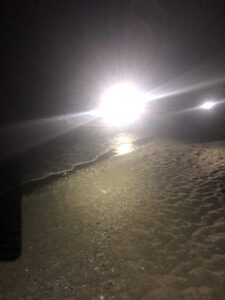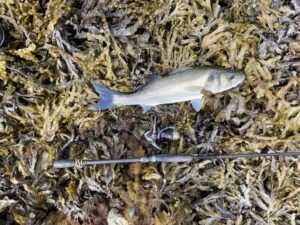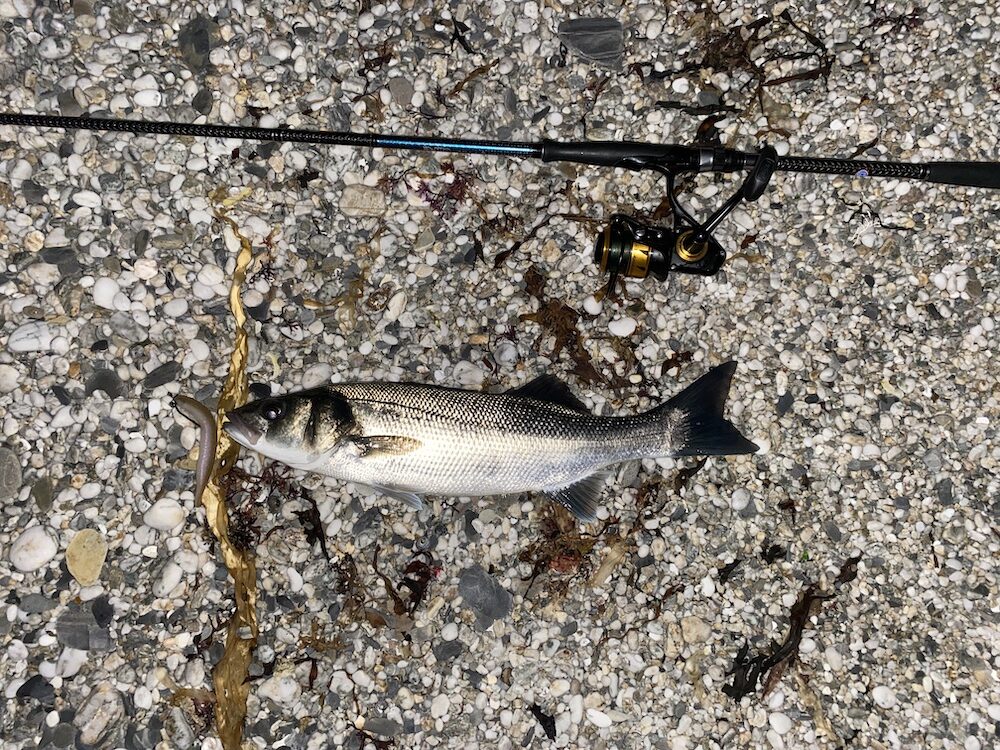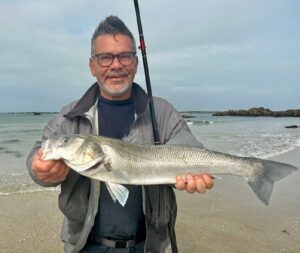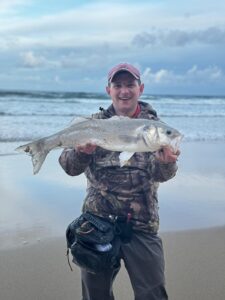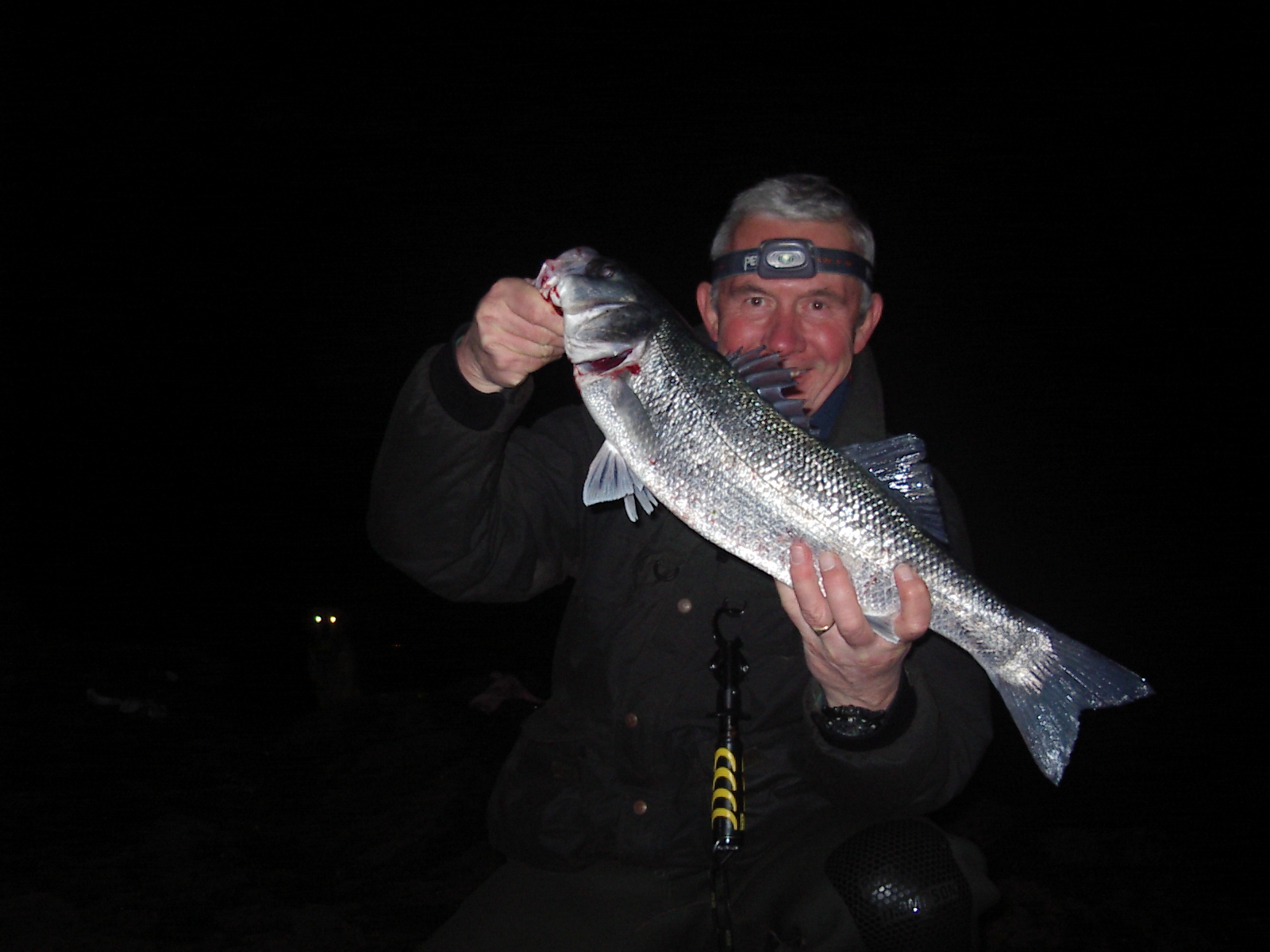After a run of blanks in my local estuaries, I wondered if the coast might be more productive. After all, the foxgloves are flowering, and there had been several recent reports of bass gorging on pin sandeels, so it should be worth a go. But these catches were from boats, and I wondered if the fish would be within casting range of the shore.
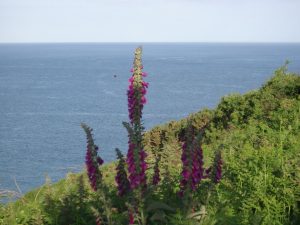
In contrast to the relatively new (to me) marks I fish in estuaries, most of the ones I fish on the coast are like old friends – over the years I’ve come to feel comfortable with them, and know when and where they’re at their best! I decided to give one of these a go, as the tide and conditions seemed right for it.
Matching the hatch
I’ve long since worked out where the ‘hotspots’ are on this mark, but the usual ones weren’t producing. I’d brought along a selection of lures, including some shorter ones, in attempt to ‘match the hatch’. I was sticking with surface lures – a 9cm Yozuri Arms Pencil – perhaps my all-time favourite plug. It was getting dark, so any indication of a fish taking the lure would be by feel, rather than sight. I worked the little plug across the boulder field, in the same way that Jon Hnat (see featured image), now sadly no longer with us, had done when he introduced me to this plug a quarter of a century ago.
Turn-stop-turn of the reel handle; bang! fish on! No monster, but very welcome, and enough to encourage me to keep fishing.
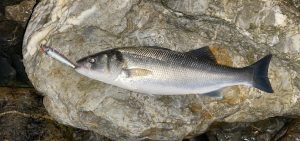
Time for a change
Now fully dark, I decided to put the surface lures to bed. I was getting bumps and knocks, even the odd snatch, cycling through several small lures. I decided to change to soft plastics, and chose the smallest one I had – a white 4.5″ Cornish Snax.
At this point I would normally call it a day, but that one fish gave me the encouragement to stay, and I knew this mark could still produce at that stage of the tide. Slowly winding the lure back, with a steady, straight retrieve, there was a definite snatch – but no hook-up. Interesting, I thought, and cast out again. Another snatch, but this time there was no messing about – a 51cm bass!
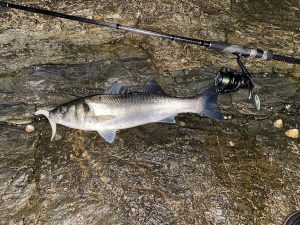
Encouraged by this success, I went on to catch another two bass (42 & 51cm) on the same lure (they’re good these!), before things finally went quiet.
Spanning the years
It struck me that, in one session, I had used lures which spanned 25 years of development, and how my fishing had changed as a result. I caught my first fish on an Arms Pencil back at the turn of the century, and here I was catching on a soft plastic of much more recent origins, all those years later. Each development opens up the possibility of fishing in different ways and situations, enhancing our range of fishing opportunities, and the pleasure we get from pursuing these.
Another mark
It was good to know that this old friend can still produce the goods, but with the tide a little later, I fancied a go at another favourite mark the following night. I chose to start with surface lures again. This time I wanted to see if that new lure from BLUK would work with the trebles swapped for single hooks. It wasn’t long before I had a bump, followed by that tell-tale splash. Next cast a feisty little bass latched on to the lure, proving that it works, and with single hooks too.
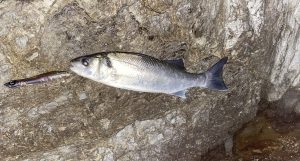
After last night’s experience, it was straight on with the Cornish Snax when it got dark. Several bumps and snatches later (small fish), a bass hit the lure hard. It put up a good scrap before I managed to bring it up on the rocks.
A lucky escape
I placed the fish gently on the wet rocks, and reached for my phone to take a picture. Then all hell broke loose, as the fish made a bid for freedom, the rod clattering over the rocks. I had a surreal moment just then, sensing that both rod and reel were heading for the drink, and being totally unable to do anything about it. Luckily(?) for me, in the chaos the line must have been cut on the jagged rocks and the line parted, so I got away with just losing a lure and clip. I didn’t get to measure the fish before it escaped, but would estimate low 40’s cm. Hopefully the lure will come out of the fish’s mouth soon enough.
That was the last of the smaller lures I had, so I tackled up again with a 5 inch version of the Cornish Snax. The bass didn’t seem to mind the extra half an inch – first turn, bang – 43cm bass!
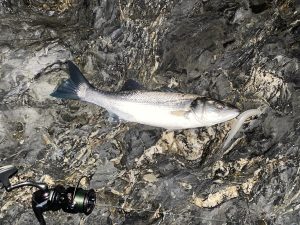
Final word
I was saddened, and angry, to learn, through Facebook, of a number of ‘anglers’ (not sure where) keeping multiples of 15-20cm juvenile bass. Not only is this illegal, it is preventing these 1-2 year-old bass from reaching the age (6-7 years for a female bass) where they can reproduce, and provide much-needed replenishments for the stocks. Please, if you see this type of behaviour, report it to your local Inshore Fisheries & Conservation Authority.
That’s all for now folks. Let’s hope this blog encourages some ‘new’ anglers to join us ‘old(er)’ ones, and keep taking this great sport forward,
![]()

